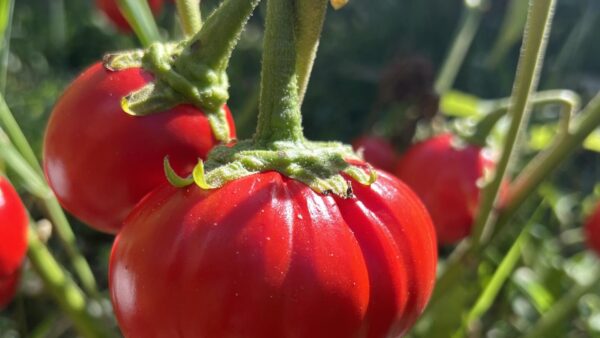Another one of the projects that was awarded in the Horizon 2020 program is INVITE (INnovations in plant VarIety Testing in Europe). The project aims at improving efficiency of variety testing and availability of information to stakeholders on variety performance under diversified production conditions and on biotic and abiotic stresses. But how does the seed sector feel about this project?
27 partners across Europe from various sectors ranging from research, breeding, DUS examination to performance testing for both conventional and organic farming participate in INVITE. Over a period of five years, the partners will be able to spend 8 million euros to achieve their goals, and the coordination of the INVITE project lies with the French research organization INRA. The project addresses DUS and performance testing in a balanced way and intends to maximize synergies between them through related activities based on phenotyping, genotyping, modelling and database management. INVITE will focus on 10 crops (wheat, soybean, perennial ryegrass, tomato, sunflower, maize, potato, apple, lucerne, oilseed rape). One expected impact is the introduction of plant traits into the testing protocols that respond to new challenges and demands in the conventional and organic sectors, while also taking into account the economic return of growers. The seed industry is involved, and European Seed asked Christoph Herrlinger at NPZ, one of the seed industry partners, what he felt about this project.
European Seed (ES): Christoph, what is the background to the INVITE project and what are the main objectives?
Christoph Herrlinger (CH):The project follows a call under the EU’s Horizon 2020 program. Simply said, it is about improving variety testing as a basis for variety listing and for plant variety protection (PVP). There are many new approaches and methods to describe plants. First and foremost, of course, there are molecular biological methods that can be used to describe the genetic constitution of plants in a simpler, faster and more precise way. In addition, there are the new methods of so-called digital phenotyping, which can improve the determination of traits. However, not everything that is suitable for describing a plant is also suitable for describing varieties. The project aims to gain insights into which new approaches will be useful in the future for the system of variety description. It is important that this is not purely technology-driven. It should only be implemented what is considered sensible, taking into account the interests of all stakeholders. In this way, INVITE should contribute to making the system of variety description simpler, more effective and faster and to making it future-proof overall.
ES: Is there really a need for this INVITE project?
CH:In the very beginning primarily, the research organisations (e.g. INRA from France) and the plant variety offices (e.g. the CPVO) were at the forefront of drafting the conceptual idea of the project. But plant breeding companies joined in shortly afterwards. This is not surprising. Variety listing is – at least in Europe – probably the most important filter or bottleneck breeders have to deal with, to get their newly bred varieties through in order to get them to market. But variety listing is of course much more than just such a formal filter. At least for the agricultural species, variety listing, through the Value for Cultivation and Use (VCU) test, ensures proper performance of varieties. It also defines, through the DUS criteria (Distinctness, Uniformity and Stability), the product “variety”. Given this importance of DUS and VCU we want to take part in the discussions about it. It is obvious that depending on how you define processes, methods and criteria around DUS und VCU, you can end up with fairly different systems. To give you an example: Does performance mean high yield, or low input, or both? If it is a mixture of these aspects, how to calibrate them against each other? Or with a view to plant variety protection: narrow distances for distinctiveness lead to more varieties but also to a narrow scope of protection while it is exactly the other way around with broad distances. There has been an extensive exchange between variety offices and plant breeders about this already in the past. Nevertheless, the INVITE project is an excellent platform to further build on and to put existing positions and insights into a broader perspective.
ES: Are there any risks associated with the project?
CH:No chance without a risk. But seriously, there are indeed some aspects to this project which need scrutiny. Next to the objective of efficiency gain the project also addresses the topic of sustainability. Not that addressing sustainability would be a bad thing as such. But the existing system of DUS and VCU already strongly contributes to sustainability. A higher yielding, more stress tolerant variety is per se more sustainable; a variety which delivers these traits with less input even more so. And also, the DUS test contributes to sustainability, and homogeneity is the key factor here. A homogeneous field can be manged more effectively, less need for input is the positive effect. We should be very careful with challenging these proven elements and should e.g. limit the listing or marketing of heterogeneous material to very exceptional cases.
ES: How will the project ensure that the harmony between DUS and VCU, and between PBR and NLI is not disturbed?
CH:You address the so called “one key several doors” principle, which means one DUS test can be used for both variety listing and for PVP, ideally in all markets. Sticking to and strengthening this principle, contributes to the efficiency in variety testing because it avoids duplication of work. Luckily, national plant variety offices are to a certain degree “keepers of the grail” in that regard, because they are involved in both variety listing and PVP. Also, the CPVO, focussing on PVP, is well aware of the importance of that principle. According to us, there is a strong interest, also with CPVO, that this principle is kept, so that for example the national offices’ DUS expertise in certain crops can be used (through the concept of the entrusted offices) also in Community PVP. Participation of offices and plant breeding companies in the project will ensure that this principle is taken well into account and, to the degree possible, even fostered.
ES: Sustainability criteria are already part of the breeding work as these are important considerations for breeders. What does the project wish to change in this respect and why?
CH:You are right.The existing system of DUS and VCU already strongly contributes to sustainability. But if we can find the higher yielding, more tolerant and less input dependent varieties more efficiently and more quickly, this would be an additional contribution to more sustainability. Speeding up the performance test and making it more efficient is therefore not just about costs but also impacts positively on sustainability. Also, content wise probably there is room for one or the other aspect which could be added to the VCU criteria. But we should not forget that we are walking a thin line here. We will not be able to deliver on the concept of “more from less” if every new variety would have to undergo e.g. a kind of environmental assessment including socio economic impacts and alike. This is something we as an industry partner of the project will have a close look at, and I believe that also the colleagues from the variety offices agree that we must maintain the established and trusted elements of variety testing, while at the same time making them fit for the future.
ES: Is there at all a need to identify additional sustainability criteria for variety testing?
CH:The existing system is – conceptually wise – a good system, but also good things can be improved. But we must not throw away the baby with the bathwater. We would do sustainability a bad turn if we would ignore the need for clearly identifiable, high yielding, easy to manage varieties with high quality output traits.
Editors’ Note: Christoph Herrlinger is Head of Legal and Member of the Management Board at NPZ in Germany












